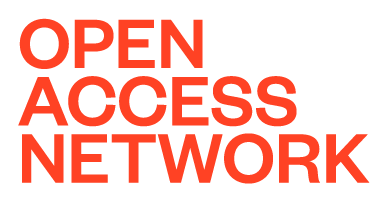Subscribe to our newsletter
Collective, Collaborative, Complementary — That is What Makes the OAN Unique
Authors: Rebecca Kennison & Lisa Norberg
Collective open access models are all the rage. This past summer the Open Access Publishing Cooperative Study got underway, looking at the feasibility for sustainable cooperative scholarly publishing. Last week the European Union hosted a Workshop on Alternative Open Access Publishing Models, where one of the more interesting themes to arise was the compelling nature of the consortial approach to funding OA projects. And this week we celebrate Open Access Week, with its theme of “Open for Collaboration,” which celebrates the other side of the equation, that of the increasing cooperation between and among allied communities: OA publications, open educational resources, and open data.
Collective, collaborative, and complementary — these are also at the heart of the Open Access Network (OAN), a transformative model of OA publishing and preservation that encourages partnerships among scholarly societies, research libraries, and other partners (e.g., collaborative e-archives, repositories, university presses) who share a common mission to support the creation and distribution of research and scholarship and encourage affordable education. Although a new organization, we are pleased to have already as members of the Network a number of publishers, scholarly societies, university presses, and academic libraries from across the spectrum — liberal arts colleges, public colleges and universities, and large private universities — as well as technology companies committed to advancing scholarly collaboration and access. Among our members, we are delighted to say, is Digital Science.
So what is the OAN model? In a nutshell, the OAN includes a plan, supported through collective funding, to convert traditional subscription publication formats, including society- or university press–published journals and books or monographs, to OA; however, our ultimate goal is to provide an approach to funding that sustains the infrastructure needed to support the full life-cycle for communication of the scholarly record, including new and evolving forms of research output. Simply put, we intend to make knowledge — whatever its form or format — public.
Our own approach to OA, whether we’re talking about the funding side or the content-creation side, differs somewhat from other models you may have encountered, particularly in three main ways:
- Most OA business models look to support specific publishers and their operations. We at the OAN are not planning to host content ourselves, but rather to facilitate the financial support of OA projects, publishers, and platforms of all kinds, no matter what their underlying business model. Because we are not publishers ourselves, our approach to OA is entirely flexible and infinitely scalable.
- We want our model of collective funding to support the entire infrastructure for scholarly communication, rather than simply certain formats. The predominant OA business models are limited by their cost-per-unit approach. An APC or a BCP only works if there’s an article or a book that is being produced. Most scholarly communication is not discretely packaged that way. Our funding model will support not only the publication of journals and books, but also datasets, multimodal projects, collaboration and publishing platforms, repositories (e.g., data, institutional), open educational resources (e.g., textbooks), software code — you name it! We also want to enable support of future modes of communication, whatever those might be. And especially important to us is to ensure sustainable support not only for the creation and publication of scholarly content, but also for the ongoing archiving and preservation of that work.
- Because we are looking to facilitate the funding of scholarly communication infrastructure, rather than hosting content ourselves, our own approach is also entirely complementary with all other models out there that have a shared goal of making content open and publicly accessible. While right now we are focused on developing collective funding support for humanities and social science content produced in association with a scholarly society (no matter who their publisher) or university press, our approach can easily and rapidly scale to support the creation and preservation of content of any type in any discipline in any region published by anyone. We could easily adapt our model — and could do so today! — to reward institutional support of any and all OA projects and models, both those that exist now as well as those that might arise in the months and years to come.
Collective, collaborative, complementary — that is what makes the OAN unique.
We welcome the opportunity to answer any questions or explain our approach in more detail! And, of course, we also welcome your support. Please don’t hesitate to get in touch!

